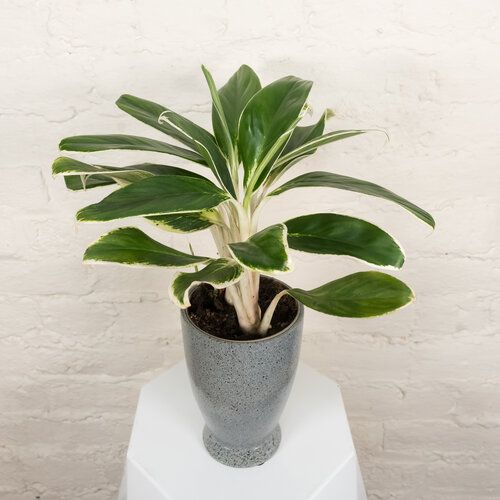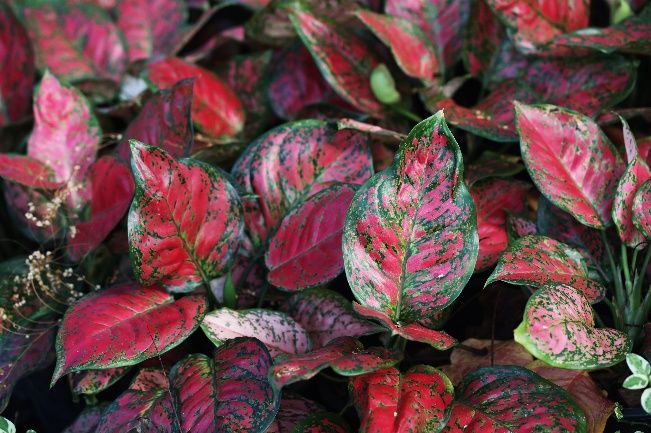This document is part of a series originally authored by Edward F. Gilman.
Introduction
Aglaonema, commonly known as Chinese evergreen, is a genus of 26 species native to the Asia-Pacific region, along with many cultivar selections. Chinese evergreen is an herbaceous perennial with an upright growth habit. This plant can reach a height and spread of 1 to 3 feet, depending upon species and cultivar selection. This plant is commonly grown for its ornamental foliage, which is glabrous and may be variegated with different patterns and colors including green, yellow, white, pink, red, or gray depending upon cultivar selection (Figure 1, Table 1). The evergreen foliage ranges from 8 to 12 inches long (Figure 2). It produces flowers that are borne on a spadix and protected by a spathe (Figure 3). These flowers are yellowish-green and generally considered inconspicuous compared to the foliage. Red fleshy berries may be produced on a stalk and are considered showy (Figure 4); however, this occurrence may be rare depending on lighting conditions. This plant lends a tropical feel to the landscape and is well suited for mass plantings, groundcover, container or above-ground planters, or as a great houseplant.
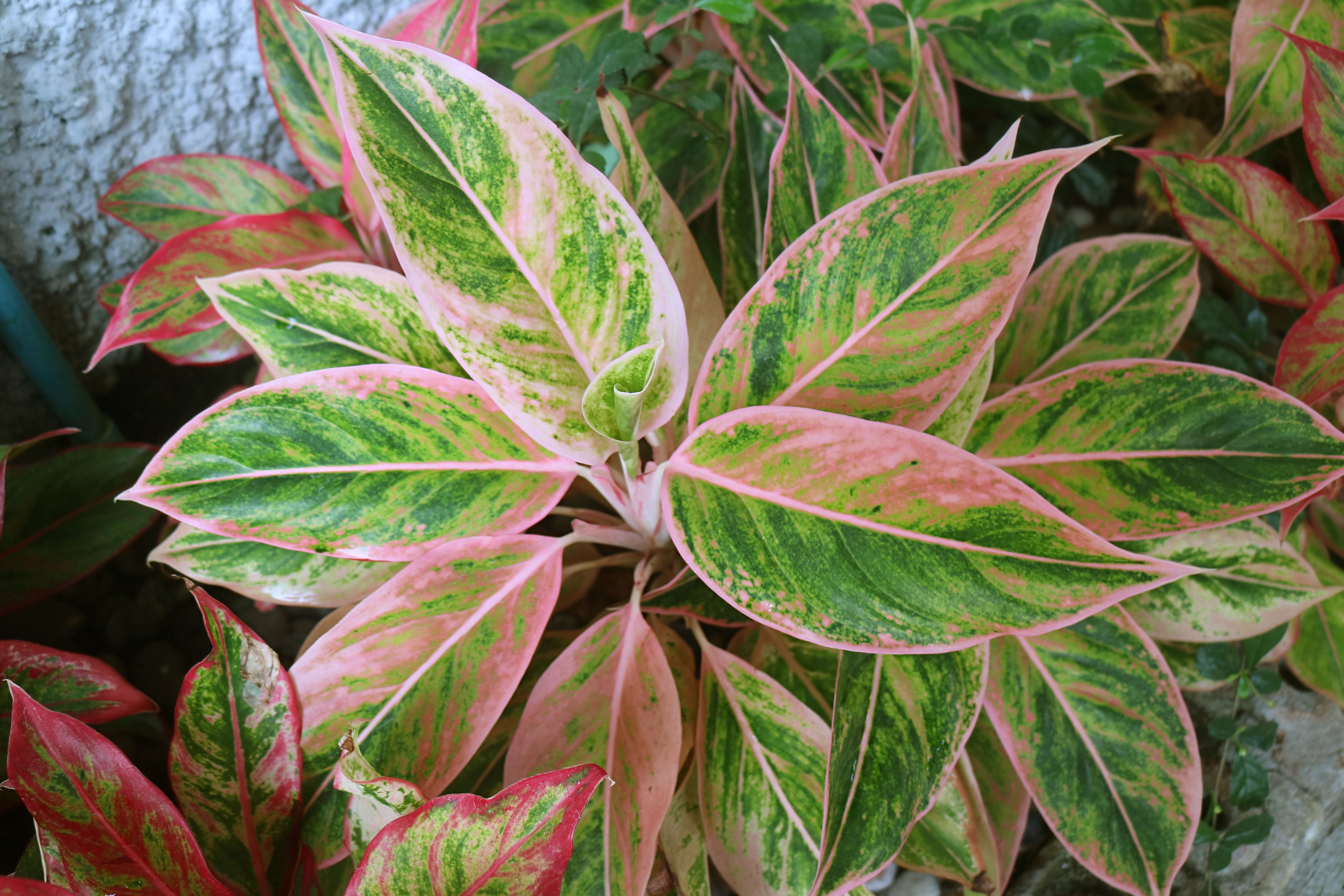
Credit: jobi_pro via Adobe Stock
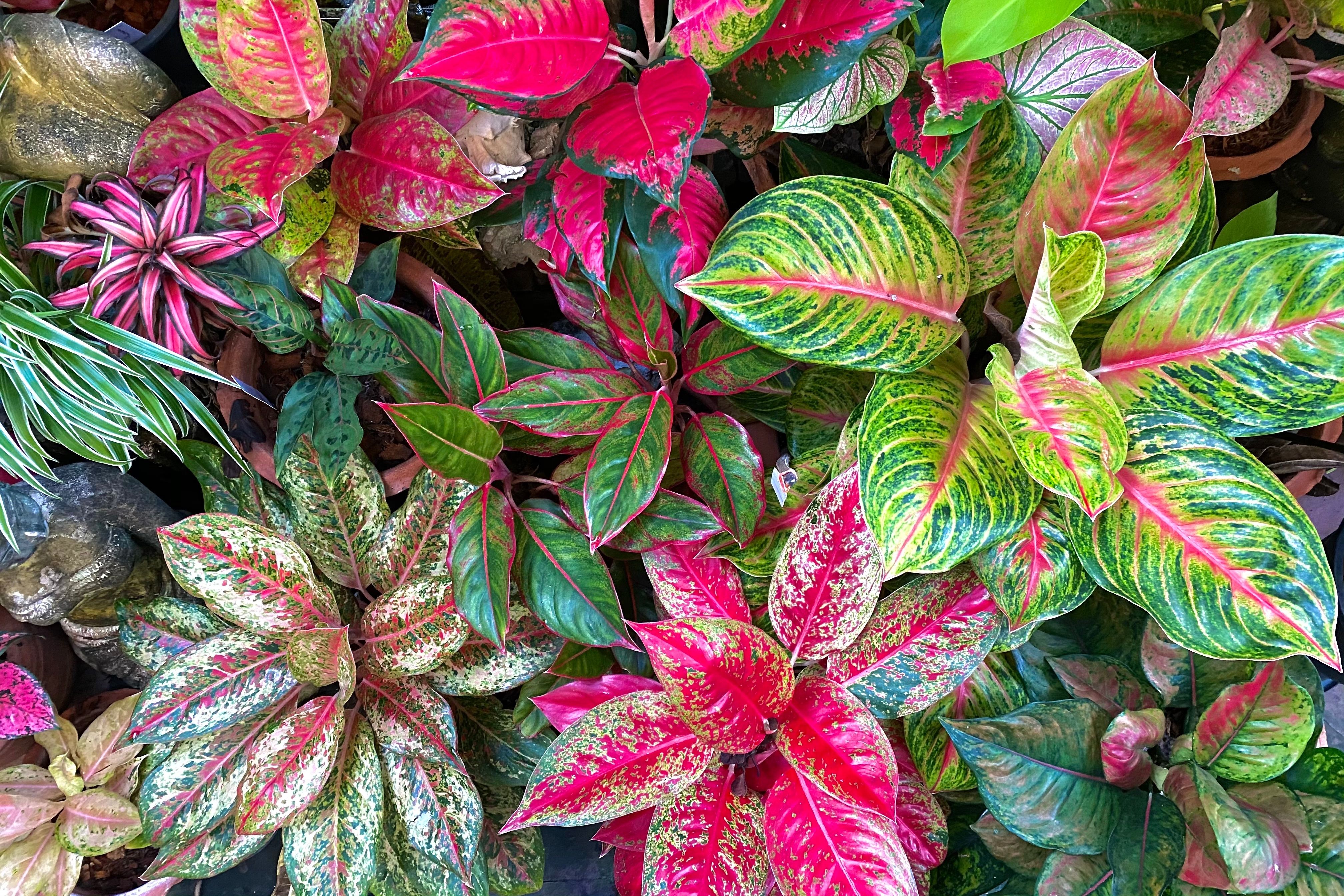
Credit: Kittiwut via Adobe Stock

Credit: kpsathydev via Adobe Stock
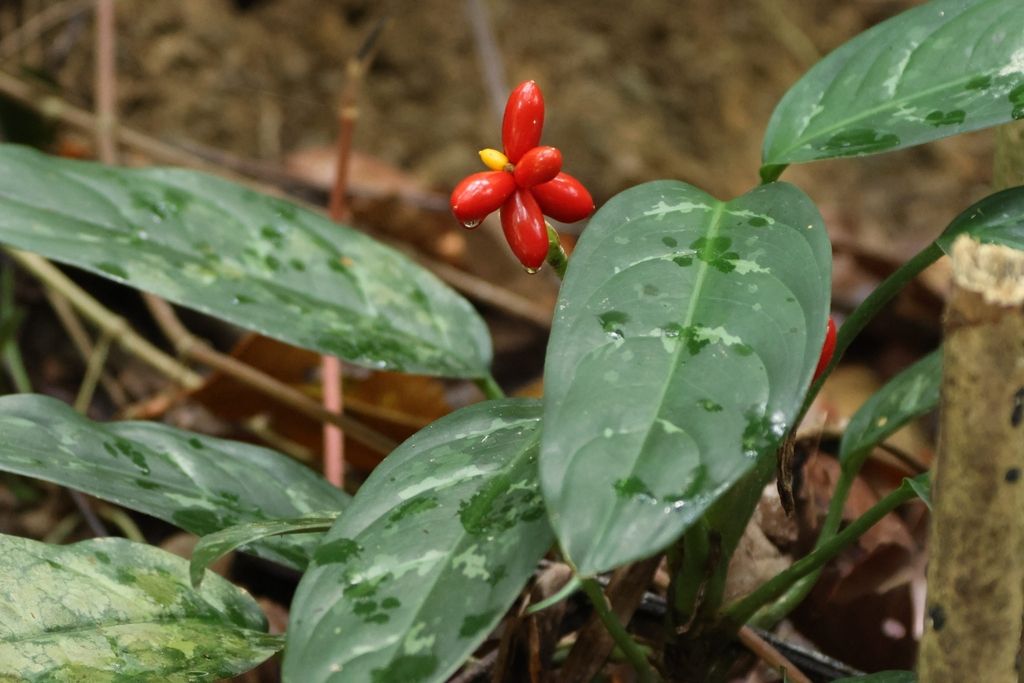
Credit: © Donna Schakelaar, some rights reserved (CC-BY-NC) via iNaturalist
General Information
Scientific name: Aglaonema spp.
Pronunciation: ag-lay-o-NEE-ma species
Common name(s): Chinese evergreen, Aglaonema
Family: Araceae
Plant type: perennial; herbaceous
USDA hardiness zones: 10B through 11B (Figure 5 and 6)
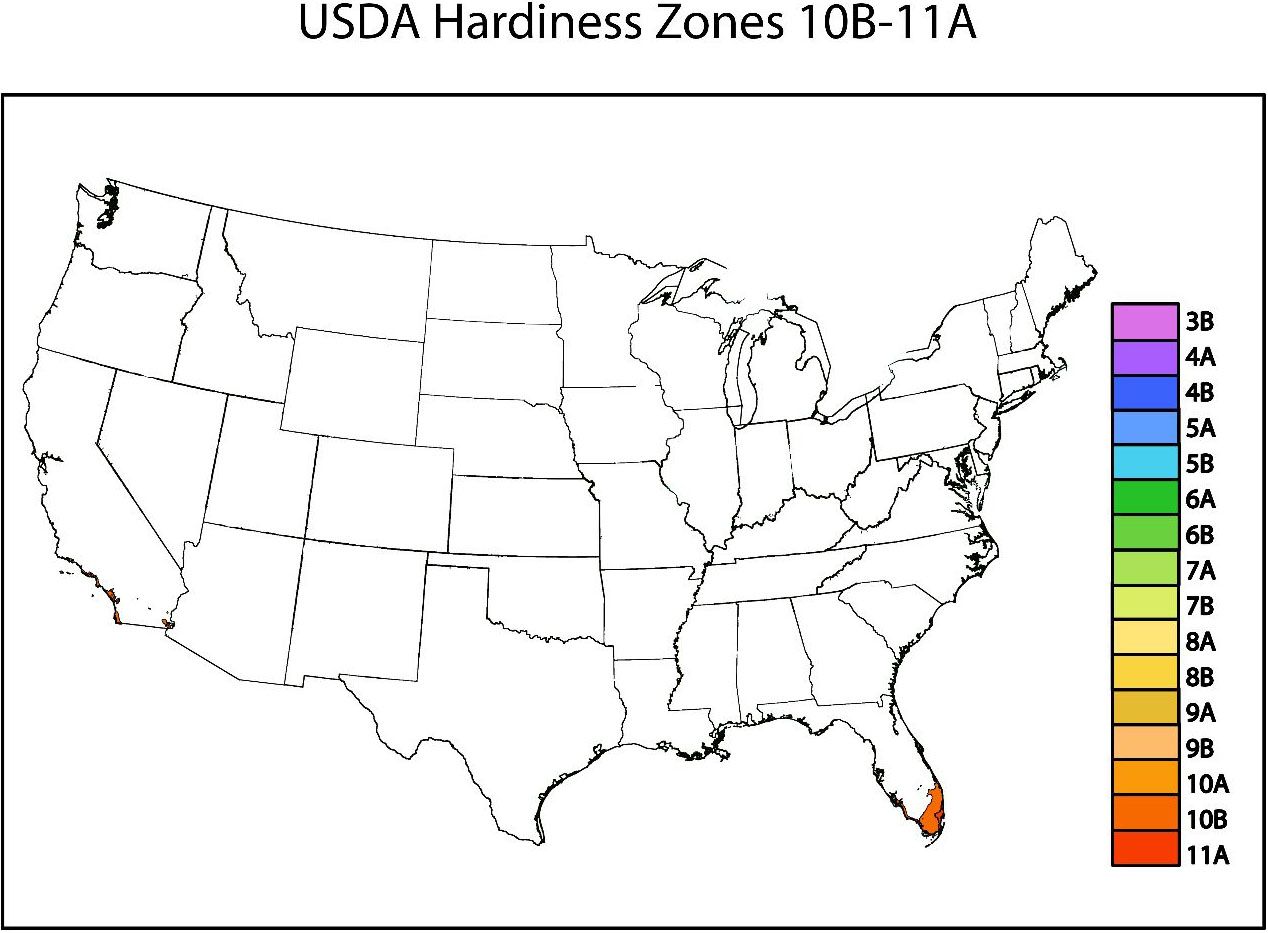
Credit: This map is based on the 2023 USDA Plant Hardiness Zone Map. Visit https://planthardiness.ars.usda.gov/ for specific zone information.

Credit: This map is based on the 2023 USDA Plant Hardiness Zone Map. Visit https://planthardiness.ars.usda.gov/ for specific zone information.
Planting month for zones 10 and 11: year-round
Origin: not native to North America
Invasive potential: not known to be invasive
Uses: mass planting; container or above-ground planter; groundcover; suitable for growing indoors
Availability: generally available in many areas within its hardiness range
Description
Height: 1 to 3 feet
Spread: 1 to 3 feet
Plant habit: upright
Plant density: moderate
Growth rate: slow
Texture: medium
Foliage
Leaf arrangement: spiral
Leaf type: simple
Leaf margin: undulate
Leaf shape: ovate
Leaf venation: pinnate
Leaf type and persistence: evergreen; showy
Leaf blade length: 8 to 12 inches
Leaf color: dark green; light green; silver; white; pink; red; yellow; gray; dependent upon cultivar selection (Table 1)
Fall color: no fall color change
Fall characteristic: not showy
Flower
Flower color: green spathe; white spadix
Flower characteristic: summer-flowering
Fruit
Fruit shape: oval
Fruit length: 1 to 3 inches
Fruit cover: fleshy
Fruit color: red
Fruit characteristic: showy
Trunk and Branches
Trunk/bark/branches: typically multi-trunked or clumping stems
Current year stem/twig color: green
Current year stem/twig thickness: very thick
Culture
Light requirement: plant grows in the shade
Soil tolerances: acidic; clay; sand; loam
Drought tolerance: low
Soil salt tolerance: poor
Plant spacing: 24 to 36 inches
Other
Roots: usually not a problem
Winter interest: showy evergreen leaves add winter interest
Pest resistance: long-term health usually not affected by pests
Toxicity: this plant exhibits low toxicity; all parts of the plant may cause dermatitis or internal issues if ingested; toxic principle is calcium oxalate crystals; use caution around pets
Use and Management
Chinese evergreen, unlike many other tropical plants, thrives in full-shade locations and will experience leaf scorch if located in too sunny of a location. As it is a tropical plant, temperatures below 45°F can injure the foliage. It will tolerate any fertile, nematode-free soil or artificial media including peat, perlite, sand, clay, loam, or can be grown hydroponically. This plant needs moist soil, which is allowed to dry slightly for a few days before watering. Avoid overwatering this plant as it will lead to root rot and leaf yellowing. Chinese evergreen should be placed in low light, either as a house plant, in sheltered locations on the north side of buildings, or under heavy shade of trees.
Chinese evergreen plants are attractive when planted as single specimens, or in mass to create a tropical, coarse-textured effect. When planting in mass, space plants on 2- to 3-foot centers. Many species and cultivars of this plant are available, displaying a variety of colors and variegation on the foliage (Table 1). Chinese evergreen may be grown outside USDA hardiness 10B–11 if protected from frost or grown as a houseplant. Green and silver forms of this plant perform well as houseplants and in low-light settings. High color selections will require bright indirect light to retain their color. Propagation is by cuttings.
Table 1. Common Aglaonema species/cultivars and their notable traits.
Design Considerations
The Chinese evergreen's broad leaves and lush, irregular form lend a cool, tropical feel to the landscape. This plant’s pointed, rippled leaf margins give it a coarse texture, and with its deep variegation, create a bold statement. For textural contrast, pair it with softer, mounding plants that have small foliage, or with grasses featuring thin, strappy blades and wispy flowers. To enhance the plant's color, dark green varieties are best highlighted by plants with yellow-green, variegated, or burgundy foliage, while more colorful varieties of Chinese evergreen stand out against a backdrop of fine-textured, dark green plants.
Pests and Diseases
Soilborne nematodes and mites can be a problem for Chinese evergreen plants. Roots can rot if the soil is kept too wet. No diseases of major concern.

